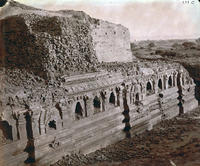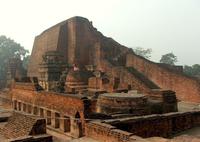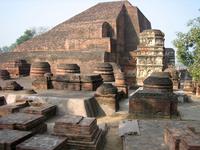You are in: Asia -> India -> Archaeological Site ... , and traditional search or Image Gallery will yield results of this site only
Archaeological Site of Nalanda Mahavihara (Nalanda University) at Nalanda, Bihar
| Site number: | 1502 |
|
| Type of site: | Cultural | |
| Date: | 3 century BC-13th century | |
| Date of Inscription: | 2016 | |
| Location: | Asia, India, State of Bihar, Nalanda | |
Up to 75 images are shown here. Click on each for more details or on Image Gallery for more images.
| Description: | The Nalanda Mahavihara site is in the State of Bihar, in north-eastern India. It comprises the archaeological remains of a monastic and scholastic institution dating from the 3rd century BCE to the 13th century CE. It includes stupas, shrines, viharas (residential and educational buildings) and important art works in stucco, stone and metal. Nalanda stands out as the most ancient university of the Indian Subcontinent. It engaged in the organized transmission of knowledge over an uninterrupted period of 800 years. The historical development of the site testifies to the development of Buddhism into a religion and the flourishing of monastic and educational traditions. --WHMNet's description is from WHC Site, where additional information is available. | |
| Nalanda (IAST: Nālandā; /naːlən̪d̪aː/) was an acclaimed Mahavihara, a large Buddhist monastery in the ancient kingdom of Magadha (modern-day Bihar) in India. The site is located about 95 kilometres (59 mi) southeast of Patna near the town of Bihar Sharif, and was a centre of learning from the seventh century BCE to c. 1200 CE. It is a UNESCO World Heritage Site. The highly formalized methods of Vedic learning helped inspire the establishment of large teaching institutions such as Taxila, Nalanda, and Vikramashila which are often characterised as India's early universities. --Wikipedia. Text is available under the Creative Commons Attribution-ShareAlike License. | ||
| Source: | http://whc.unesco.org/en/list/1502 | |
| Source2: | Wikipedia (http://wikipedia.com) | |
| Reference: | 1. UNESCO World Heritage Center (http://whc.unesco.org/en/list/1502). 2. Wikipedia. | |


















